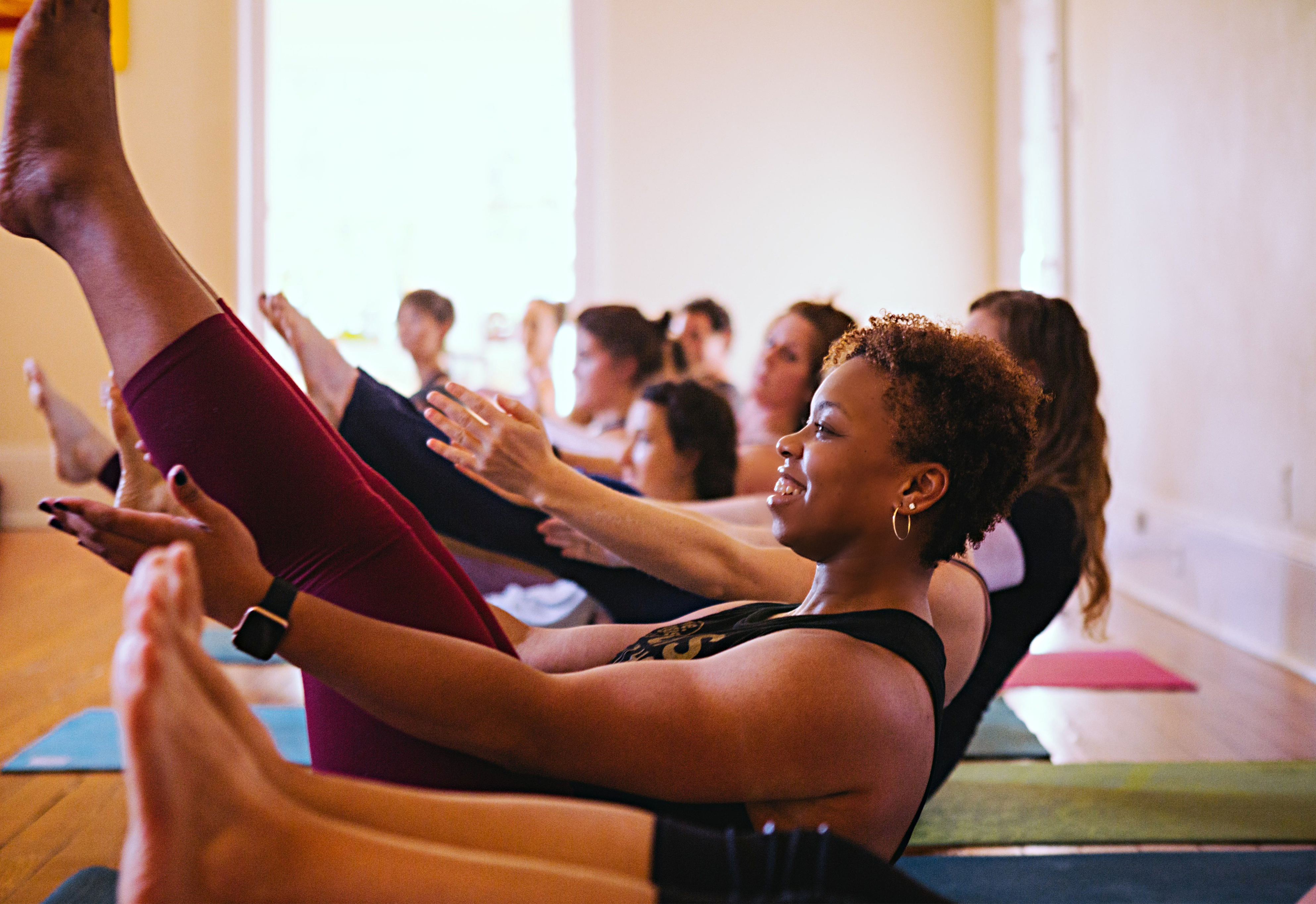
Yoga is so much more than poses on a mat. In fact, did you know that yoga can literally change your health? Anywhere from reducing anxiety, to lowering blood pressure, to balancing hormones, to alleviating pain from fibromyalgia, to lowering blood sugar in people with diabetes. The list goes on and on. This week, let’s focus our attention on the benefits yoga has on diabetes.
Before we dive into beneficial yoga poses for diabetes, let’s first talk about what diabetes is and how it is normally managed.
There are two types of diabetes, type 1 and type 2. You may also hear people talk about type 3 diabetes, which refers to Alzheimer’s Disease. But in general, there are only two types. Type 1 diabetes is an autoimmune condition characterized by a complete absence of insulin, whereas, type 2 diabetes is the abnormal metabolism of carbohydrate characterized by insulin resistance. In this case, insulin is still produced by the pancreas, however, its function is impaired. Insulin is a fat-storage hormone that is secreted from the pancreas upon the consumption of food or beverage. Insulin also lowers the body’s blood glucose levels following food consumption.
Once consumed, food is broken down into glucose, the body’s preferred energy source. In the absence of food, we still need glucose, so instead our liver breaks down glycogen (the stored form of glucose) to provide glucose when we haven’t eaten. When insulin is secreted from the pancreas, that signals the liver to stop breaking down glycogen. We don’t need glucose from the liver because we now have food, (i.e.) glucose, available.
In type 1 diabetes there is no signal to the body to stop producing glucose because insulin is not present, therefore, blood glucose levels can rise rapidly and become quite high. Whereas in type 2 diabetes, the insulin is impaired or slow to respond to blood glucose levels and as a result actually oversecretes insulin. The insulin response in type 2 diabetes is also impaired in such a way that the insulin hormone may no longer fit the insulin receptor on certain cells (i.e.) muscle cells. Think of it like a lock and key mechanism, insulin is the key and the receptor is the lock. Insulin is unable to “unlock” the receptor that allows glucose to enter the cell; ultimately resulting in elevated blood glucose levels seen in patients with diabetes.
Type 1 diabetes is immune-mediated and is often diagnosed in children. It can be stimulated by environmental pathogens or viruses. It can also be diagnosed in young adults and accounts for 10% of the cases of diabetes.
Type 2 diabetes is typically diagnosed in adults although, with the rise of obesity in kids, we are now seeing more type 2 diabetes in children. Type 2 diabetes tends to be more common among certain ethnicities (i.e.) Native American, Non-Hispanic Black, and Hispanics, however, the only person not at risk for type 2 diabetes is a normal-weight Caucasian female, so Caucasian men and overweight Caucasian women are also affected.
Type 2 diabetes accounts for 90% of diabetes diagnoses. Unfortunately, there is another population of people with prediabetes, who often go undiagnosed. It is estimated that 86 million Americans have undiagnosed prediabetes.
Type 1 diabetes requires insulin therapy whereas type 2 diabetes can be managed with a combination of oral and injectable medications with or without insulin.
Now that we’ve covered the basics of diabetes, let’s talk yoga poses and their effect on blood sugar.
In general, yoga can offer a balanced blood sugar in the following three ways:
- Improves body composition
- Lowers blood glucose levels likely due to its ability to lower cortisol
- Improves autonomic nervous system function, thereby, reducing the effects of epinephrine on blood glucose levels
Below are 11 Beneficial Yoga Poses for People Affected by Diabetes:
- Viparita Karani (legs up the wall) – Inversion for relaxation that may lower blood pressure and glucose levels.
- Supta baddha konasana (cobbler’s pose) – Calms nervous system, lowering blood pressure and glucose levels. Also stimulates the abdominals, kidneys, and bladder; promoting gut and renal absorption of glucose.
- Paschimattanasana (seated forward bend) – Lowers blood pressure and promotes weight loss.
- Salamba sarvangasana (supported shoulder stand) – Inversion that stimulates the thyroid, improves circulation, calms mind, and reduces stress. Diabetes can sometimes present with hypothyroidism.
- Halasana (plow) – Another inversion that also stimulates the thyroid, improves circulation, and reduces stress.
- Urdhva Mukha Svanasana (upward-facing dog) – Lowers blood sugar by stimulating your abdominals and also lowers blood pressure. Requires a lot of muscle strength, which can increase muscle sensitivity to insulin.
- Dhanurasana (bow pose) – Backbend that opens the chest and stimulates abdominals promoting blood glucose absorption in the gut.
- Ardha Matsyendrasana (Half Lord of the Fishes pose) – Stimulates blood glucose absorption in the gut.
- Supta Matsyendrasana (supine spinal twist) – Also stimulates blood glucose absorption in the gut.
- Balasana (child’s pose) – Promotes the production of insulin from beta cells of the pancreas.
- Savasana (corpse pose) – Lowers blood pressure, relaxes the body, and encourages lower cortisol levels which tend to be elevated in type 2 diabetes.
Now it’s your turn. Let me hear from you, do you or someone you know suffer from diabetes? In what ways has yoga improved your health?
Talk soon,

+ show Comments
(review Comment Policy)
- Hide Comments
add a comment